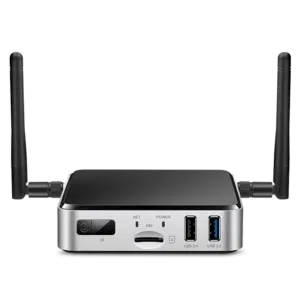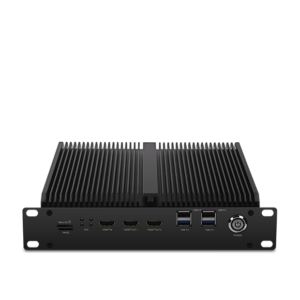AI on Edge Units vs. Cloud AI: Pros and Cons
AI on Edge Units vs. Cloud AI: Pros and Cons
Blog Article
AI on Side Products vs. Cloud AI: Professionals and Cons
Real-World Applications of AI on Side Devices
Synthetic intelligence (AI) is no further limited to the sphere of big, centralized information centers. As a result of improvements in engineering, side products now enjoy an integral position in deploying AI directly where knowledge is generated. But what does AI on edge products suggest, and exactly why is it making such a buzz? Here, we'll explore how edge ai solutions operates in the real world through side products and discover their wide variety of practical applications.

What is AI on Edge Units?
AI on edge units identifies deploying artificial intelligence algorithms directly on products like smartphones, cameras, drones, or IoT sensors. These devices do not need use of centralized machines for running information; alternatively, they conduct examination and conclusions locally, making the method faster, more effective, and frequently more secure.
The "edge" here merely refers to computing done close to or at the foundation of data era, rather than counting on the cloud. This shift is pushed by the demands for real-time information handling and the need to decrease latency, enhance privacy, and reduce bandwidth usage.
Critical Real-World Applications of Edge AI
1. Intelligent Monitoring
AI-powered cameras built with face recognition, activity detection, and anomaly recognition are transforming security systems. Side devices in that domain can analyze video revenues in real-time to recognize suspicious actions, eliminate fake sensors, and improve public safety. Like, AI algorithms can find uncommon actions and attentive authorities instantly without the need to send movie data to a central host for analysis.
2. Healthcare Monitoring
Wearable units and portable medical gear are leveraging ai m.2 module for controlling health knowledge more efficiently. Edge-based AI in units like health trackers and smartwatches screens users' vitals, such as for instance heartbeat, oxygen levels, or blood stress, in real-time. These programs analyze knowledge domestically and give quick feedback, paving the way in which for faster treatment all through emergencies.
Beyond wearables, sophisticated medical imaging devices designed with on-device AI can detect signals of diseases like cancer, allowing early in the day diagnoses even yet in distant areas without net connectivity.
3. Autonomous Cars
Self-driving vehicles are among the absolute most well-known types of edge AI in action. With detectors, cameras, and LiDAR programs serving as data options, AI computations get place onboard these cars to create split-second decisions. From finding pedestrians and limitations to moving city roads, side AI guarantees that the car runs easily and efficiently. The real-time handling convenience of edge units reduces the reliance on high-latency cloud programs, ensuring safety in life-critical scenarios.
4. Retail Analytics
Side products in retail situations are helping corporations analyze customer behavior. Wise cabinets and AI-equipped cameras can detect client tastes, monitor supply, and also customize in-store experiences in true time. The data created from they assists suppliers make educated choices, improve customer satisfaction, and optimize inventory management.

5. Industrial IoT
Factories and industrial plants are adopting edge AI to revolutionize their checking and automation processes. AI-powered receptors on equipment identify potential problems long before they lead to costly failures. Predictive maintenance driven by edge AI decreases downtime, promotes productivity, and guarantees safety on the production floor.
6. Personalized Experiences in Consumer Products
Your smartphone is a perfect exemplory case of how edge AI personalizes consumer experiences. Functions such as voice assistants, flexible camera options, and on-device language translation use real-time AI to answer person wants without giving sensitive knowledge to external servers. That fosters both comfort and solitude for the conclusion user.
The Growing Impact of Edge AI
The ownership of AI on edge products continues to surge, driven by industries' increasing demand for low-latency, real-time processing, and higher data privacy. Their purposes are reshaping industries including healthcare and automotive to public security and retail. By adding AI's energy closer to where knowledge is created, edge products are not only increasing effectiveness but in addition demonstrating the countless possible of development in today's linked world. Report this page